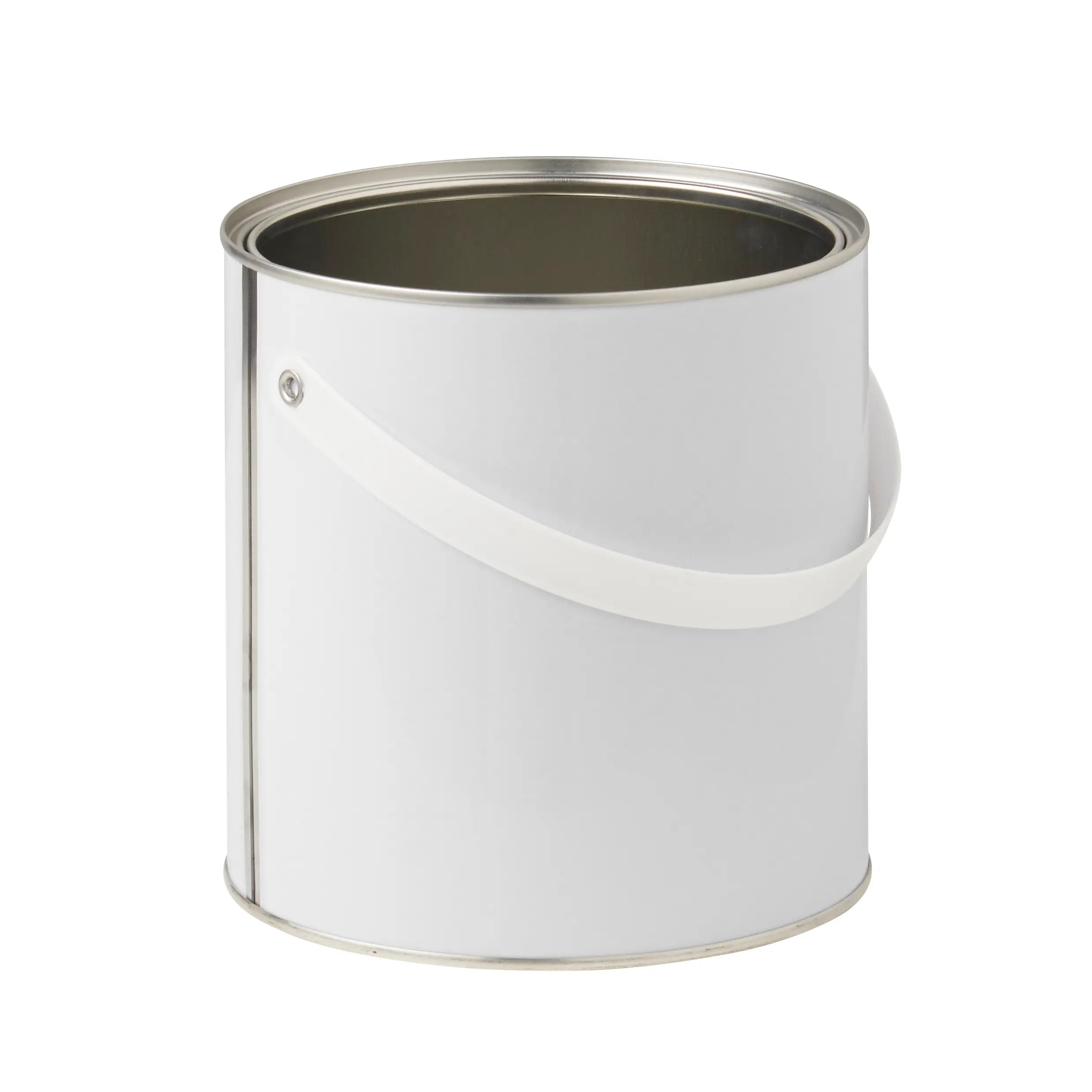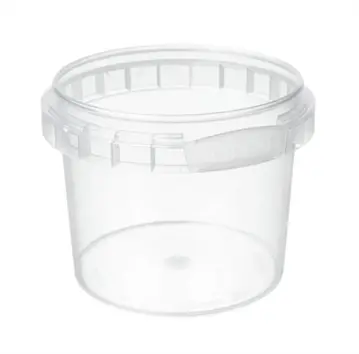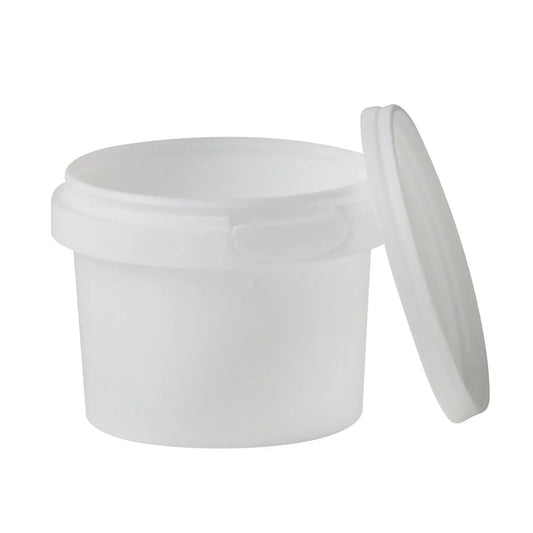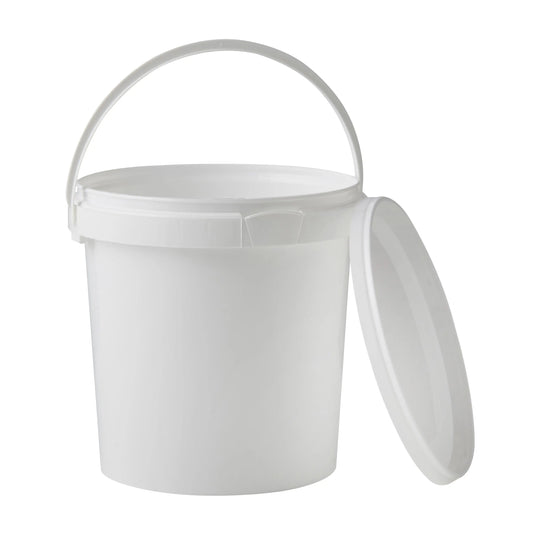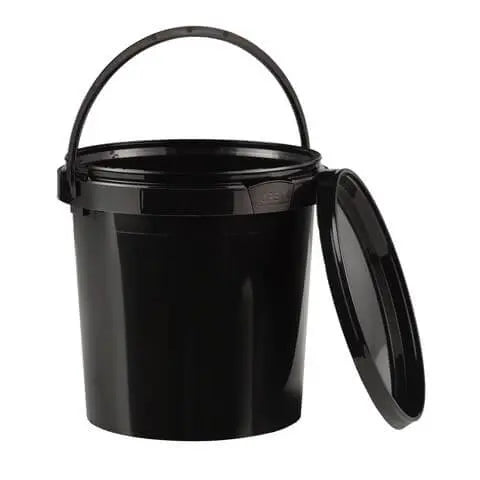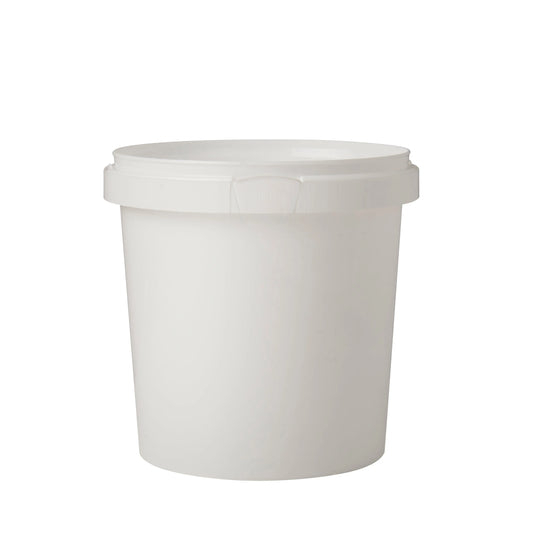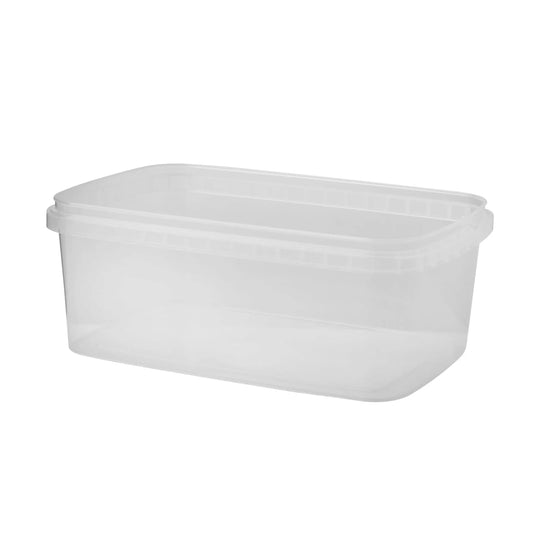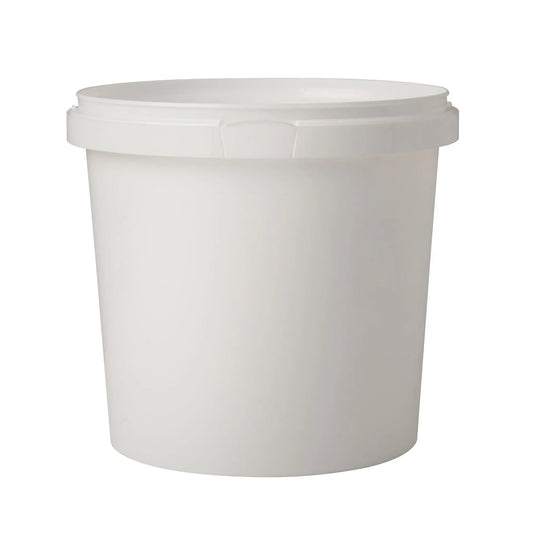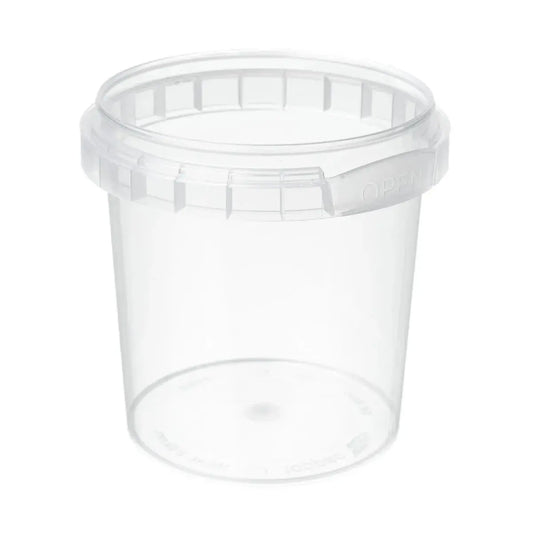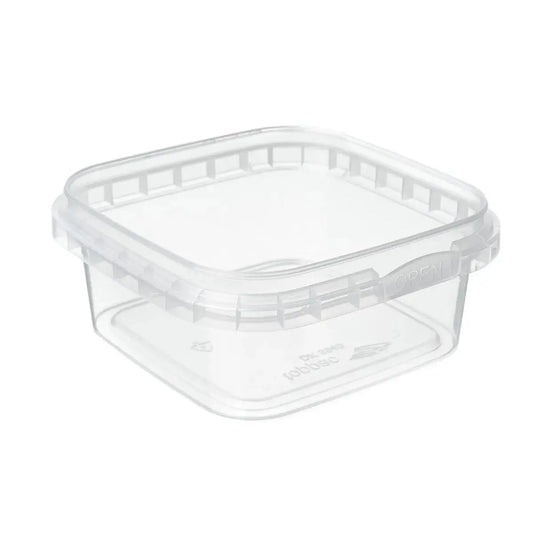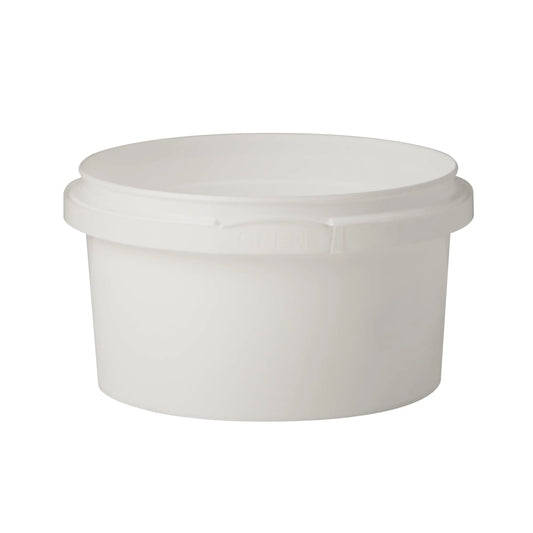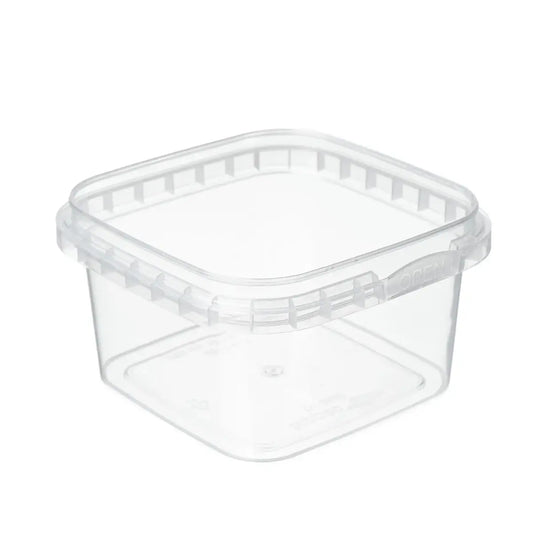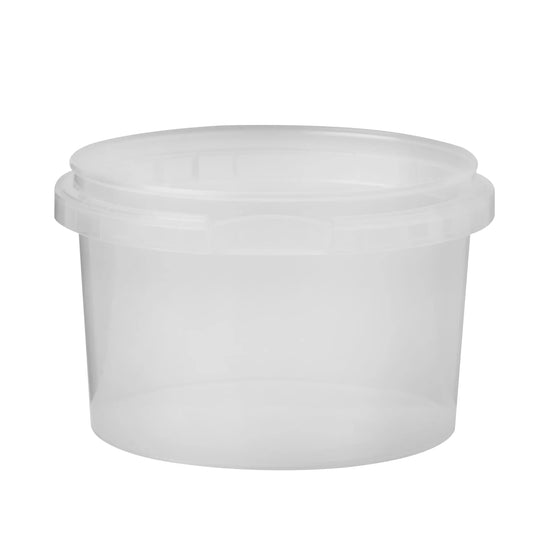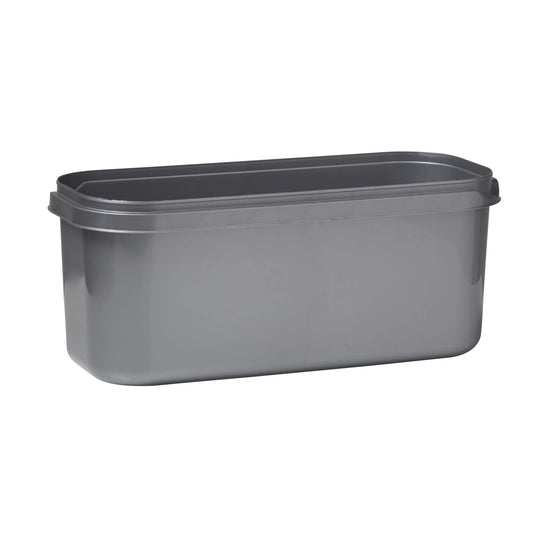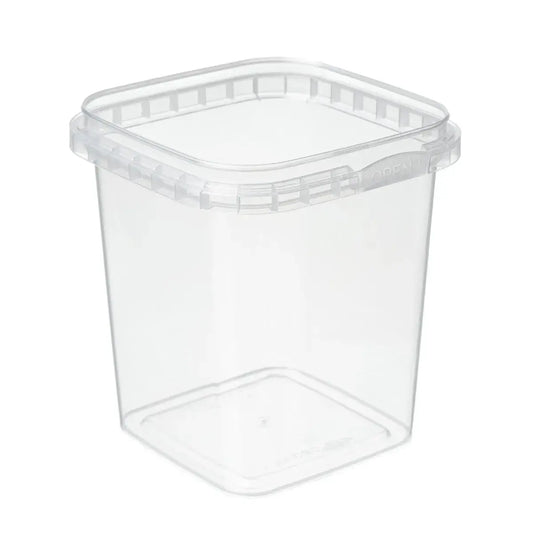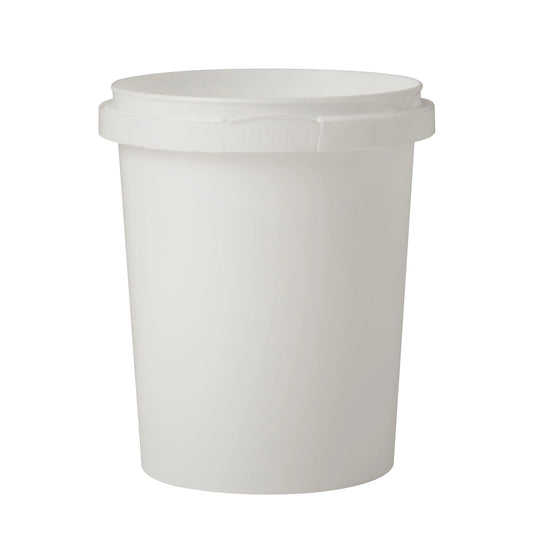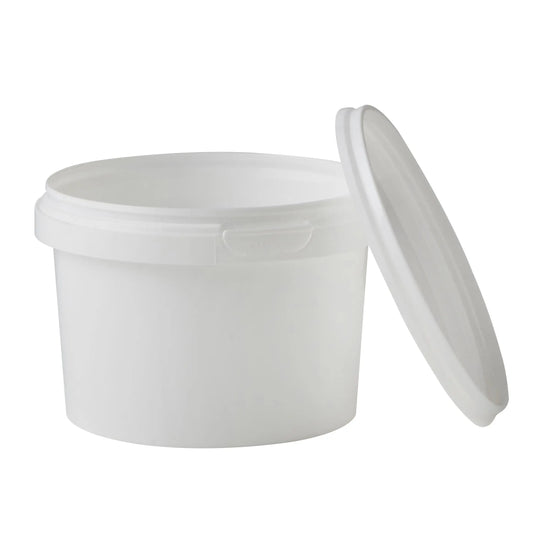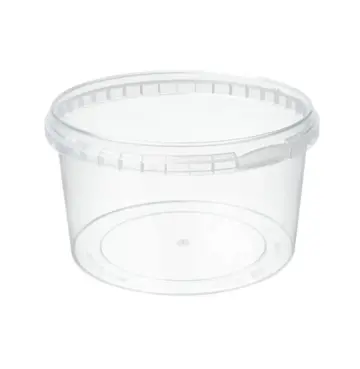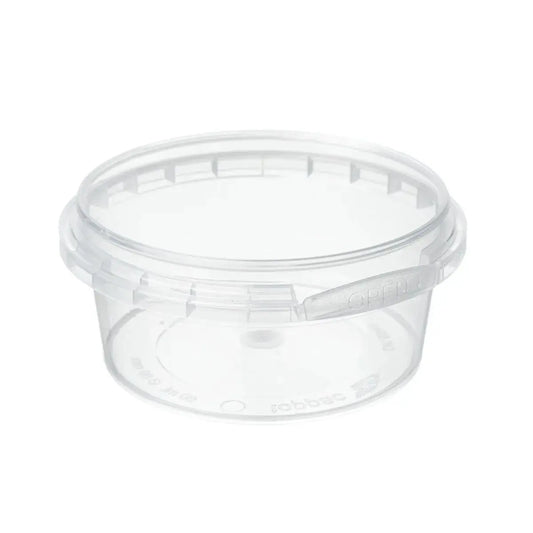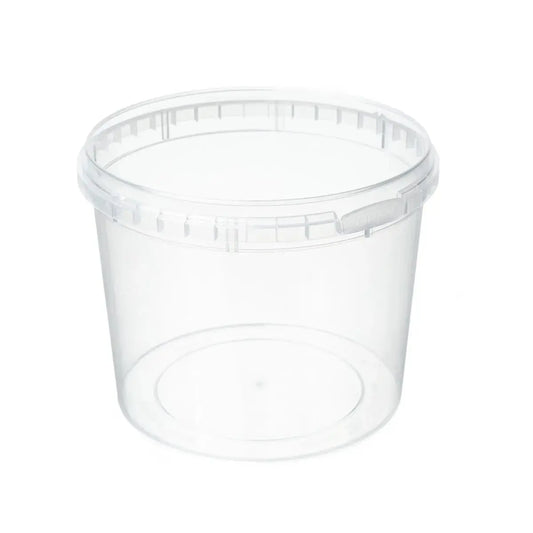Food grade plastic packaging is vital for food safety. It protects the contents from the outside world and is in direct contact with food so it must be made from the right materials and fit for purpose.
This is where the Food Safe standards come in. Any products used for Food and Beverages should be marked with the wine glass and fork symbol, ensuring they're non-toxic and food-safe. This food grade symbol is recognised internationally, making it easy to identify whether packaging is suitable for food use (or not), even on imported products.
Rigid packaging, made from plastic or metal, provides the highest level of protection which is why it's a popular choice for food businesses. Invopak specialises in rigid food-grade plastic packaging and has supplied the Food and Beverage industry for over fifty years.
We understand the critical role that food-grade packaging plays in ensuring the safety and quality of the products it holds, and our team can offer advice on everything from the best food tubs for sauces and dips to commissioning printed buckets that showcase your brand.
And if you've ever wondered what Food Safe means or what plastic food packaging tests are required to make the (food) grade, then keep reading.

Food-grade plastic tubs marked with the wine glass and fork, are suitable for food.
What is Food Grade Plastic?
Not all plastic is food grade. Some plastics can degrade over time, or when they come into contact with certain foodstuffs, so it's important to check that products are suitable for their intended use with your packaging supplier.
Plastic packaging classified as food grade has met food safety regulatory standards. Food-grade packaging materials have been tested and passed safe for direct contact with food, this means the plastic is free from dyes, additives or harmful products, and will not leach harmful chemicals that could contaminate the food.
Food safety compliance is essential for the food industry, but customer opinion is also important for businesses. In recent years consumers have been increasingly concerned about the risk of BPAs in plastic food packaging.
BPA or Bisphenol A is an industrial chemical used in the plastics industry since the 1950s. Research has shown links between BPA exposure and hormone-related cancers, diabetes and cardiovascular disease. Choosing BPA-free packaging for food and drinks removes this risk.
The food-grade plastic packaging that Invopak supplies is BPA-free, so you can order your packaging with us with confidence.
Food-Safe Plastic vs. Food-Grade Plastic
Food- grade means the material is suitable for food packaging whilst Food-safe is about the product itself. A material may be classified as "food-grade," but it's only considered "food-safe" when used according to its intended purpose. For instance, a plastic storage container designed for dry cereal might not be safe for storing hot soup. This is because heat can potentially compromise the plastic, releasing toxins and making the food unsafe for consumption.
Hot drinks offer the twin challenge of containing heat and liquid. Packaging that's food safe for hot liquids must be resistant to water and heat long enough for someone to drink a cup of coffee without it leaking. If you've ever tried using a paper bag in the rain you'll know that normal paper doesn't last long when you add water! Wax coatings and multiple layers give the heat and liquid resistance necessary for a coffee cup to do its job.
Many plastics are sensitive to temperature. Heat can distort packaging or make it leach chemicals and plastic can become brittle when frozen. Food manufacturers should check whether containers are suitable for hot-filling or freezer-safe, where necessary so that food safety isn't compromised.
Our Food grade plastic tubs are designed to meet the highest food industry standards. They're available in a variety of styles and sizes and many are suitable for hot-filling, microwave and freezer use. Please get in touch with the team for specific temperature guides, as well as advice on product labelling or any other queries.

Paper coffee cups must be classified Food Safe for carrying hot drinks.
Types of Food-Grade Plastics
All synthetic plastics are derived from petroleum hydrocarbons such as crude oil, natural gas or coal, but how they're made and the specific chemical makeup and properties of each vary. Rigid packaging is typically made from either HDPE or PP.
PP (Polypropylene):
PP is a durable and heat-resistant plastic with excellent chemical resistance, making it suitable for hot-fill applications and microwave use. It's commonly used for food containers, yoghurt pots, bottle caps, and microwave-safe dishes. Polypropylene is semi-transparent to opaque, depending on its thickness, and is widely recyclable.
Polypropylene is widely used to make bucket and tub packaging for paints, chemicals and coatings, as well as food. Many of our core ranges are made from Polypropylene, including our plastic buckets and food grade plastic tubs.
HDPE (High-Density Polyethylene):
HDPE has an excellent strength-to-density ratio, which means it's strong, flexible and durable, making it ideal for plastic food packaging. It also offers excellent chemical and moisture resistance, so it's ideal for holding oils and liquids. HDPE is opaque and available in various colours, typically white, blue and black. Common uses of HDPE include; milk bottles, food containers, and detergent bottles.
The structural strength of HDPE means it's the best plastic for large containers, including IBCs, Plastic Jerry Cans and Drums. HDPE containers are the most durable, practical and cost-effective way to store and ship liquids and powders in bulk.
HDPE is also one of the most recyclable plastics, it can be turned into pellets and reused because it retains enough structural strength after the recycling process to be useful. Our PCR Jerry Cans are made from at least 30% recycled HDPE and can be fully recycled after use.
What about Food Grade Plastic Bottles?
Due to environmental issues, single-use plastic drink bottles are slowly being phased out in favour of glass or aluminium. However, the many practical advantages of food grade plastic bottles mean they are still essential packaging throughout the food and beverage industry, particularly when storing or shipping goods in bulk.
The two most important considerations for food businesses are safety and cost, and when it comes to liquids and oils, food grade plastic bottles are hard to beat.
Plastic bottles protect the contents from contamination, keeping air-borne bacteria, odours, and pollutants out, extending the shelf-life and keeping the contents safe for human consumption.
One of the reasons that food grade plastic bottles still dominate the liquids market is that the alternatives just aren't as good. Glass bottles are heavy and easily broken, making them expensive and more risky to transport. Metal cans are expensive, can't be re-sealed and are opaque, so the contents can't tempt the potential customer.
The truth is food-grade plastic bottles have an excellent strength-to-weight ratio, so they're light and strong, they're also cheap to manufacture, making them the most cost-effective way to transport liquids safely.
Invopak stock a range of food grade plastic bottles. Our food grade plastic bottles are made from HDPE, so they are suitable for holding a wide range of ingredients, oils, liquids and powders.

Resin ID codes identify the type of plastic a product is made from.
Safe Plastics Number Chart for Food Grade Plastic
Plastic resin identification codes are important for recycling. For plastic to be reusable it must be separated according to material type because different plastics have different properties. The plastic numbering system preserves the purity of the recycled material by separating the plastics into types.
The chemical composition of each plastic type varies, so only some can be safely used for food packaging. The six main categories in the plastic numbering system are;
1 - PETE (Polyethylene Terephthalate) - This is usually clear and is commonly used for single-use food and beverage containers. It is relatively safe, but it's important to keep it away from heat or it can leach chemicals. PET is actually a porous surface, which means that over time bacteria can accumulate, this is why single-use plastics really are only safe to use once.
2 - HDPE (High-Density Polyethylene) - This is one of the best materials for food and beverage use because it doesn't leach chemicals and can be safely re-used.
3- PVC (Polyvinyl Chloride) - This is commonly used for food wrap and even cooking oil bottles. However PVC plastic is made using phthalates which can be harmful. PVCs should not be heated because these chemicals are released with heat. PVC is also not currently recyclable, making it one of the worst types of plastic to use.
4 - LDPE (Low-Density Polyethylene) - This is a safe plastic to use for food, and is another plastic commonly used for food wraps, and bread bags. The biggest issue with LDPE is that it isn't currently recyclable, partly because there's no market for recycled LDPE.
5 - PP (Polypropylene) - PP is one of the safest and most practical plastics in use today. It's heat-resistant, which means it's microwave and dishwasher-safe, which is one of the reasons food tubs and buckets are usually made from PP. It is also easy to recycle, making it a better choice for the environment than many other plastics.
6 - PS (Polystyrene) - This is one of the worst plastics from both a health and safety and an environmental standpoint. It leaches potentially toxic chemicals, particularly when heated and cannot be recycled. Once upon a time, it was used for coffee cups, and it's still often used for takeaway food because of its insulating properties. However public awareness of the problems with Polystyrene means that alternatives are becoming much more common.
7 - Other - everything else! - This category covers new plastics, such as bioplastics, as well as polycarbonates and plastics made with BPAs. Plastics classed as 7 can't currently be recycled and are not typically suitable for food use either.

Not all plastic is created equal when it comes to recycling - HDPE and PP can be re-used again whilst polystyrene is destined for landfill.
Can Food Grade Plastic Be Recycled?
It's the material, not the food grade plastic classification that determines whether plastic can be recycled or not. The PP and HDPE plastic used in food containers is ideal for recycling because it can be separated, cleaned and re-ground. Food-grade plastic is also often virgin plastic, the highest grade of plastic, so they produce high-grade recyclate.
Recycled plastic is not usually food-grade because it comes from multiple sources, which could have been contaminated with harmful substances. However the Food grade recycled packaging we sell is made using a coextruded process which means they have a core of recycled plastic sandwiched between virgin plastic. This means that the inside surface that contacts the food is a pure food grade plastic that's certified food-safe.
Food Grade Plastic Containers from Invopak
We're rigid packaging specialists, with over fifty years of experience supplying the food and drinks industry. We're also BRC Global Standards Certified AA across all of our sites so you can buy your food grade plastic packaging from us with confidence. Please contact us if you'd like guidance finding the right container for your needs or look at our complete range here.
